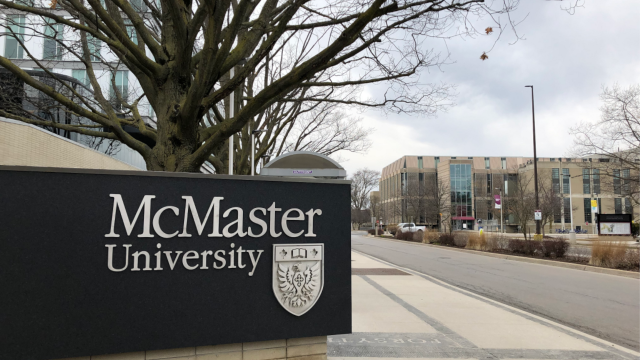McMaster researchers are going back in time to study medieval plagues in order to better understand modern infectious diseases like COVID-19.

A recently-published study looked at plague outbreaks in the 14th and 17th centuries and how the latter epidemic spread much more rapidly.
David Earn, lead author of the study and a professor of mathematics and statistics, as well as an investigator with the Michael G. DeGroote Institute for Infectious Disease Research, said the difference in growth between the two was “astounding”.
“What we found was that in the 14th century, when the plague first entered London, it actually spread very slowly,” said Earn. “So the amount of time it took for the number of cases to double was about six weeks.”
“Whereas, by the time we got to the Great Plague of London in 1665, it was spreading a lot faster. So, the doubling time was more like a week and a half.”
Researchers were able to estimate the death rates by analyzing personal wills and testaments, parish registers, and the London Bills of Mortality.
The pathogen involved in each epidemic, which has been identified as Yersinia pestis, remained “almost identical” across the centuries, so Earn said the reasons for why the plague spread more rapidly in the later epidemic are unclear.
- 3 women diagnosed with HIV after ‘vampire facials’ at unlicensed U.S. spa
- Solar eclipse eye damage: More than 160 cases reported in Ontario, Quebec
- ‘Super lice’ are becoming more resistant to chemical shampoos. What to use instead
- Canadian man dies during Texas Ironman event. His widow wants answers as to why
One of the possible reasons is that both the population size and density in London were much greater in the 17th century compared to the 14th century, and Earn said because the plague was primarily spread by rodents, there were likely more rats and other vermin as well.
“The increased human population density would have been accompanied by an increase in rat population density, and that could be what drove the faster spread.”
Earn also pointed to a drastic change in Britain’s climate between centuries as another potential reason for the more rapid spread.
“In the 17th century, it was the minimum of what’s known as the little ice age. And so, it was cooler. And that may have promoted spread of plague, because many pathogens transmit better in cooler temperatures or lower humidity.”
With the pathogen in each epidemic being essentially the same but spreading in very different ways, Earn said it’s possible to apply the study’s findings to COVID-19 and other modern infectious diseases.
“The very fact that we see this enormous difference in the rate of growth of epidemics for the same pathogen … emphasizes that a given pathogen can cause very different characters of epidemics in different places or at different times. So it’s not surprising if we find that COVID-19 spreads much more effectively in one population or another, or one country, or rural versus urban areas, that sort of thing. It shouldn’t surprise us.”
Earn also said the methodology they used to estimate the growth rate of the plague can be used even more effectively nowadays.
“We had to work hard to develop methods that were very robust, given the much less good and noisy data that we can get going back to the 14th century. We have much better data now, so the same methods are more effective for estimating growth rates of spread of COVID-19.”
The findings were published on Oct. 19 in the journal Proceedings of the National Academy of Sciences.





Comments